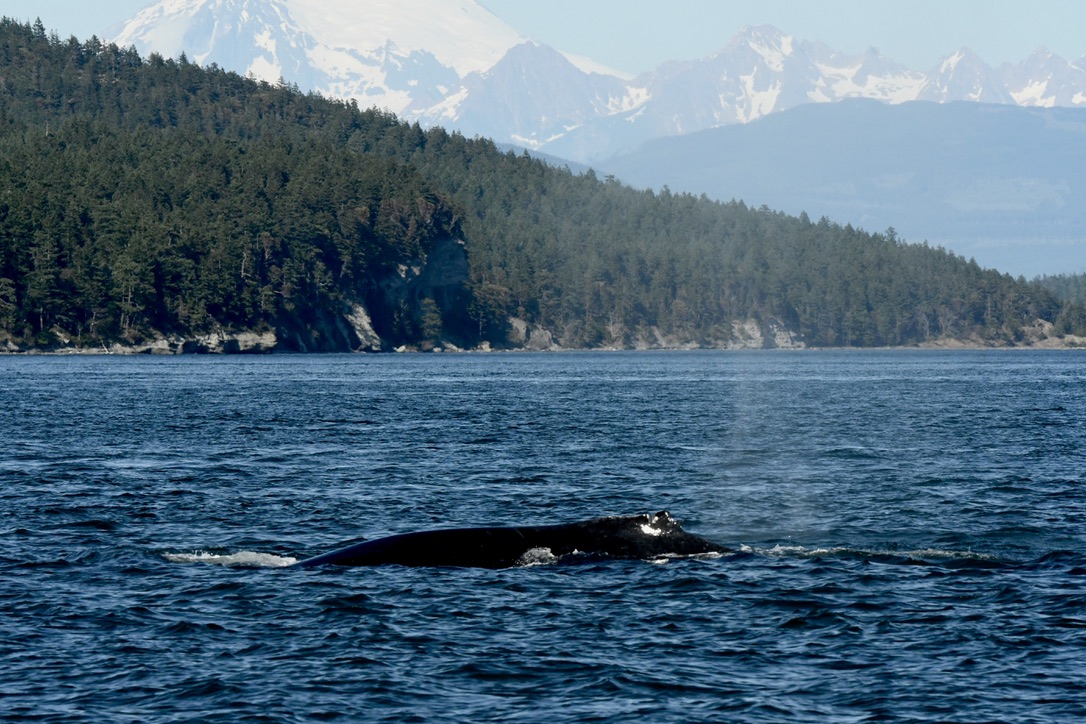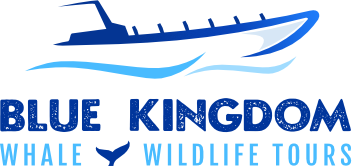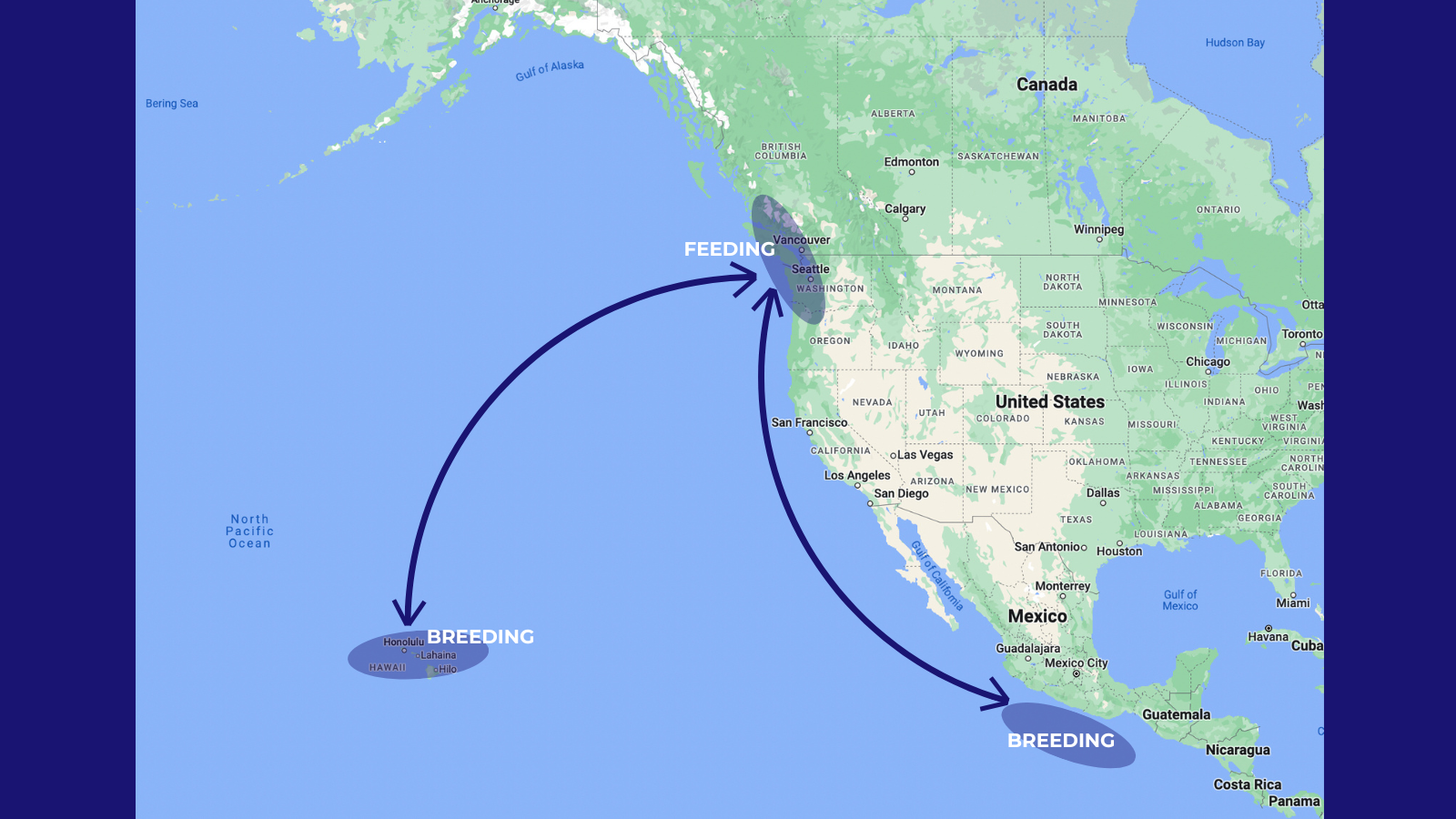The Story of “Big Mama”
Of all the animals in the Pacific Northwest, the species that has one of the greatest resurgence stories is certainly the humpback! The “Humpback Comeback” in the Salish Sea is one of my all-time favorite positive conservation tales to tell and it all started with one queen of a whale! However, understanding humpbacks and their history in the Salish Sea is vital to really getting the picture, so let’s dive in!
Humpback Ecology
Humpbacks start their lives in the warm waters of the tropics. Calves are small, measuring in at around 14 feet and weighing around 1,700 pounds. It is critical that calves are born in warm water because they don’t have the insulating blubber layer that will eventually allow them to withstand colder, northern water temperatures. Calves nurse between 6 months and a year and in that time, they are learning all about how to be a humpback in their region. Mom teaches her calf everything it needs to know and baby humpback is absorbing all the information that it can in its first year of life before weaning and making its own way in the wide world.
An essential piece of information that a young humpback must learn is where to go and when. Here in the Eastern North Pacific, humpbacks breed and have calves in Hawai’i, Mexico, and off the west coast of Central America. Humpbacks will most often return to the place in which they were born in order to breed and/ or have calves of their own one day. As the northern hemisphere summer gets into full swing, baby humpbacks make their first journey with mom to the summer feeding grounds. Some whales will feed off the California/ Oregon coast, some will venture all the way up into the Gulf of Alaska and beyond, while others still will feed off the Washington and British Columbia coastlines, including in the Salish Sea. This first migration is highly significant. Just as a humpback will return to the same wintering grounds year after year, they will also return to the same summer feeding grounds as their mother showed them during their first northerly migration.
The Salish Sea was the summer home of humpbacks since time immemorial, but human greed and the global demand for whale oil changed their story here.
Whaling and the Extirpation of Humpbacks in the Salish Sea
Humpbacks were a common species here in the Salish Sea up until the early 1900’s. However, a big push in global whaling in the late 19th century and into the 20th century saw a dramatic and seemingly irreversible reduction of humpbacks in the area. Across the globe, humpback numbers dropped by at least 90%, with global estimations being at about 10,000 individuals for an all-time low. By 1908, the whaling station in operation in the Salish Sea was shut down because humpbacks were no longer a viable resource: They had been wiped out. Extirpation is a local extinction of a population and for nearly one hundred years, humpbacks were extirpated from the Salish Sea.
There were no adults and specifically no adult females that could show young humpbacks where to go to find food in the Salish Sea. Thus, there were no humpbacks that returned to the area each year. Though there was a global moratorium on whaling in 1986, humpbacks were still nowhere to be found in the Salish Sea.
Big Mama and the Humpback Comeback
Then in 1997, just shy of a century after the last consistent humpbacks were seen in the Salish Sea, a lone humpback whale was documented off the coast of Victoria, in British Columbia. Thanks to photo-identification, this same whale was confirmed as present two years later in 1999. After radio silence for about four years, this same whale came back, but this time she wasn’t alone! In her third visit to the Salish Sea in 2003, this whale was determined to be a female bringing a little calf in tow this time! The whale world buzzed with the presence of this humpback and her calf and this legendary female earned herself the nickname Big Mama!
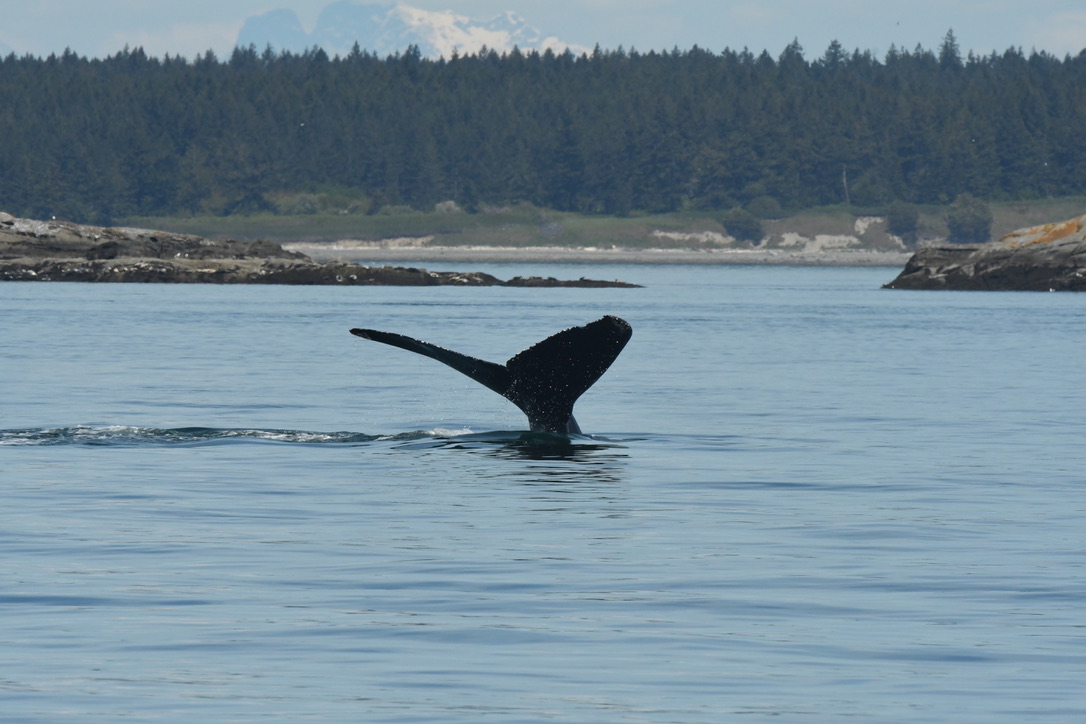
It started with this one whale, yet in less than 30 years, the humpback whale population in the Salish Sea has gone from zero to now over 800 individuals being documented as regularly visiting the area for the summertime fish fest! Not only do we see females returning with new calves each summer, our community of scientists, captains, and naturalists document new adults coming to the area each year as well! Globally, humpbacks are also on the rise, with populations growing between 3% and 12% each year, a truly miraculous recovery in post-whaling world.
Today, Big Mama is arguably one of the most iconic whales in the Salish Sea and certainly the whale who represents the “Humpback Comeback” to these waters. She has brought back seven calves already, most recently in the summer of 2022. Her first calf, which she brought to the Salish Sea in 2003 is thought to be a whale named Divot, who herself has four known calves and two known grand-calves, making Big Mama a great grandmother! But there are still so many questions: How did Big Mama find the Salish Sea? Was it accidental or was it something deep in her genetic makeup that led her to this place? She brought her own calves here, but how did so many other adult whales seem to follow Big Mama into these waters? These questions and others may never be answered, but the legend of Big Mama is a pearl in the Salish Sea oyster and it’s a story that I personally never tire of telling!
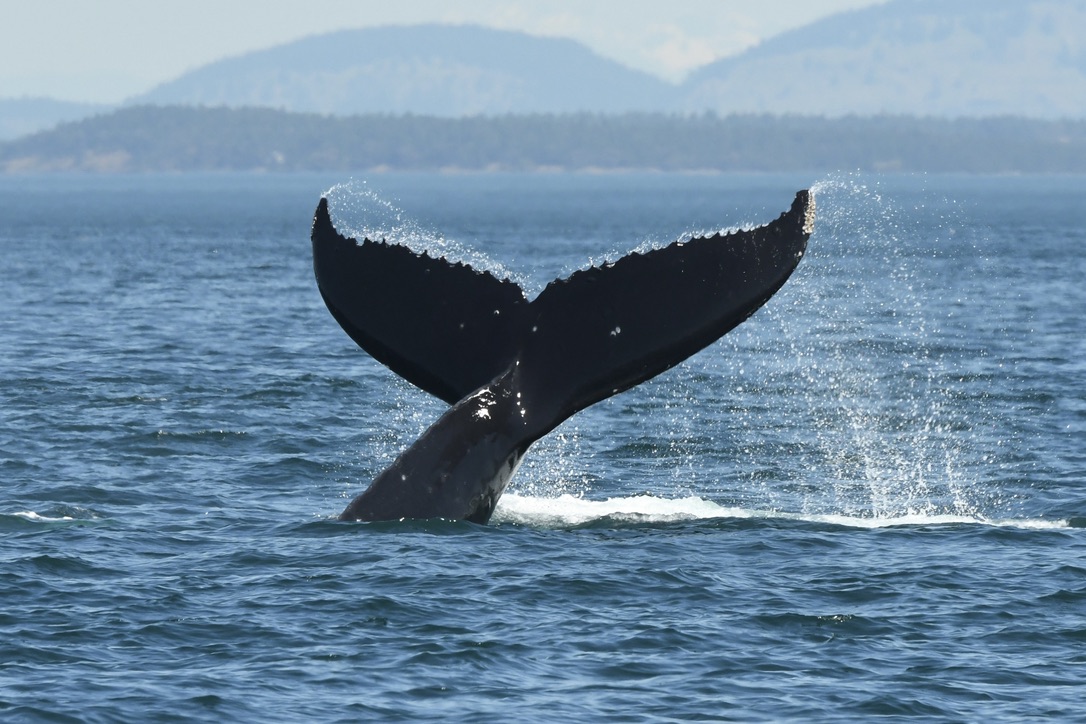
Join Us!
Here at Blue Kingdom, we are looking forward to summertime and seeing more of one of the largest of Washington mammals! In the last several years we have gotten so spoiled here in the Salish Sea, regularly encountering humpbacks between May and August. Our first encounter with a humpback this season was in March, a true early bird getting those first worms!
So the next time you find yourself thinking about animals of Washington State, remember Big Mama and the mighty humpbacks and join us for an authentic Anacortes whale watching experience! We operate every day throughout the summer and would love to see you on board with us as we adventure in the Salish Sea!
